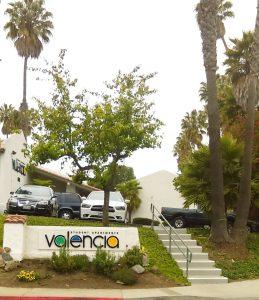By Austin Herbaugh
Chief Online Editor
Many college students struggle to find a place to live, especially in SLO where rent isn’t cheap and demand is high. Some find themselves living in deteriorating places just because they have nowhere else to go.
This happened to one Cuesta student who ended up in a run down apartment surrounded by frat parties.
“We had been rented a unit right in the middle of a frat house,†said Branden Hopper, a third semester English major at Cuesta. “There were loud parties very often and more than once we left the house to find urine and vomit on our doorstep.â€

Hopper and his girlfriend had moved into an apartment on foothill near Mustang Village, and noisy neighbors weren’t their only problem.
“They didn’t replace the carpet, the tile was peeling up and the fridge had rust all over it,†Hopper said about the apartment’s interior.
Situations like this led the San Luis Obispo City Council to adopt a rental housing inspection program to ensure that tenants find themselves in livable conditions.
“It’s going to make it so that there’s better housing conditions for students,†said Derek Johnson, Community Development Director. “This is one of many strategies to address substandard housing.â€
Johnson added that Sacramento has had a rental inspection program for four years. Since then the state capitol has seen a 22 percent drop in health and safety issues among rentals.
The goal of the program, stated in a city council report, is to eliminate unsafe rental housing conditions and to keep neighborhoods in the city safe, livable, and attractive. Starting in 2016, all rentals—excluding large apartment complexes—will be inspected every three years.  No changes will come to complexes such as Mustang Village, Stenner Glen and Valencia because they are already inspected by the fire department.

The inspections aim to keep rentals in the city properly maintained so that students have better options when searching for a place to live. Some students wanting to move have a hard time finding decent housing–such as Sierra Frost, a sophomore at Cal Poly. Frost has been trying to move out of the dorms, but has had a hard time finding a suitable place off campus.
“I’ve been looking for houses recently and some of them are really not in good condition,†Frost said about a house on Beebee street. “The landlord had divided already small rooms for more tenants, the walls were all cracked, the backyard was just rocks, dead grass, it was horrible to look at.â€
To prevent problems like this from arising, inspectors from the city will be entering rental properties.
While inspectors will be entering peoples’ homes, they are only allowed to look for structural deficiencies and code violations. The city isn’t barging in to bust college students for underage drinking and they’re not trying to find your weed. Their only purpose is to hold landlords accountable for maintaining their rentals. It still may be a good idea to put away all the bottles, hide your bongs under the bed and spray some air freshener, though.
Tenants will know when the inspection is taking place ahead of time. Landlords will be notified two weeks in advance, they then have to notify and get consent from the tenant.
These inspections will involve the city checking  both the exterior and interior of the building. On the exterior, inspectors will be checking things like fire safety, roof, stairway, and walkway maintenance. On the inside, inspectors will verify that there is heating along with hot and cold water. They will also check electrical and plumbing.
If a violation is found, the landlord will be fined. If they don’t fix it, they will be fined again until the building is up to code.
Rentals will be randomly selected for inspection with priority given to properties with past violations.
The inspections will be paid for by charging homeowners an annual fee, estimated to be $100 per year. The exact cost will be announced at the city council meeting on May 5.
The city created the inspection program because there has been a rapid increase of people renting over the last three decades. According to the 2010 US Census, 61.8 percent of living units in the city are rentals.
This trend brought up concern by long-time residents about the quality of housing in the city. This concern led to the establishment of the rental inspection program.
Maintaining rental housing is an issue for college towns. Santa Cruz, which is similar to SLO in that aspect, has had a rental inspection program since 2010.







